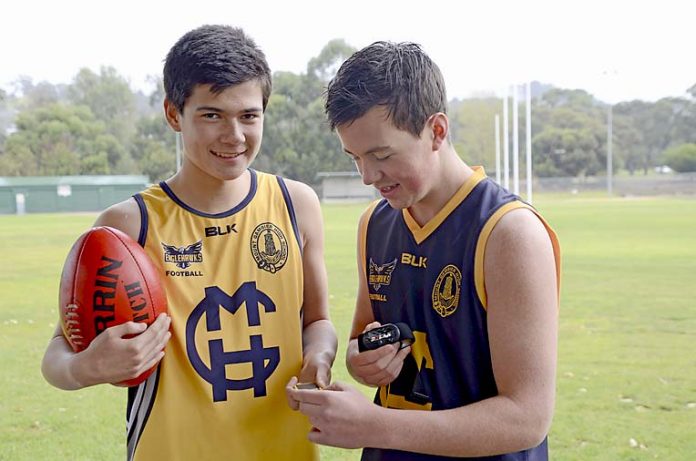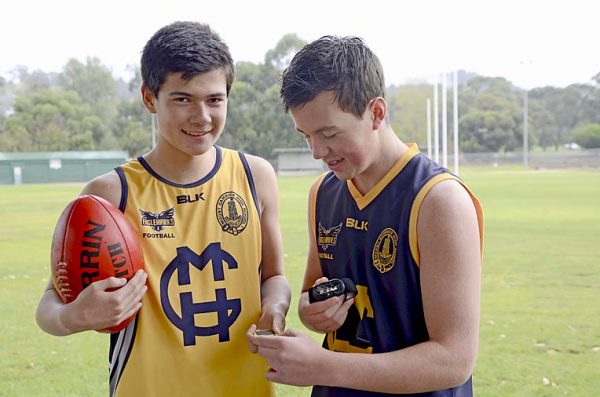

MOUNT Gambier High School has introduced a new way to combine practical and theory in its physical education lessons.
Heart-rate monitors and GPS trackers have been purchased by the school after funding was received for an innovative pathways application grant, which has opened doors into how students can engage with the class.
The devices have so far been introduced in both the specialist athletics and football programs, which has created a way for students to analyse and reflect on their own personal data.
“Obviously with the kids not being able to play competitive sport, we have been trying to work out different ways in which we can still get them to be physically active and try to link something to fitness in particular,” MGHS special sports coordinator Kerran Wingard said.
“Now that we have the majority of kids back (at school) we thought it would be a really good chance to take them through the process of being physically active and then be able to look at their data, analyse it and work out where areas of improvement could be.”
The heart-rate monitors can obviously be used to track heart rates during activities, while the GPS trackers are able to determine distance and max speed, along with hard running and sprint efforts throughout a session.
While still a new concept in the classroom, the specialist sport teachers have already started to incorporate them into lessons.
“The aths program has been out twice and the kids have had a chance to do a couple of runs and some sprints,” Wingard said.
“Part of their activity is to map out a new cross-country course around the school area because we cannot do any excursions or anything like that.
“The footy program is trying to use the GPS units to get that connection between match movements and intensity and things like that and then replicating them in training.
“It is just giving the kids a chance to be match fit or as close as possible.”
For countless youngsters in the Limestone Coast sport is a large part of their winter weekend routine, but most remain on hold due to the COVID-19 situation.
Wingard said the use of the devices is the perfect way for students to push themselves to their potential while they are unable to train in their specialised sport, before returning to the classroom to analyse their own statistics.
“For a lot of our kids it is probably the first chance they have had to actually sit down and look at some data,” Wingard said.
“Then it becomes a bit competitive as well.
“We try and push them a bit – I tell them how fast I think I can run and do it that way.
“It lifts the intensity straight away and for the kids, who have not had any of that sport and competitiveness, I think they really thrive on it.”
The introduction of the devices has also opened up pathways students may not have considered as possible career opportunities.
“It gives those kids a pathway into the sports science,” Wingard said.
“A lot of kids play sport, but the number which make it to the elite level is not necessarily that big.
“To give them the opportunity to look at sports science, it just gives them a little bit of a look into that different side of sport.”
Wingard said the school is grateful to have access to the technology, which is often out of reach for “country kids”.
“Sometimes this stuff is only available when you go to the city and the bigger schools,” he said.
“We are pretty lucky really to have access to it.
“The kids love it and they cannot wait to get them out and have a go – it is good fun to watch them when they chuck it on.
“Anything to give them that chance to be competitive or try to better themselves, that is what makes it good I think, they just thrive.”







